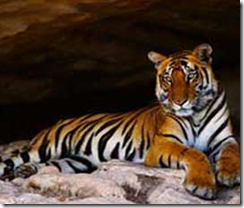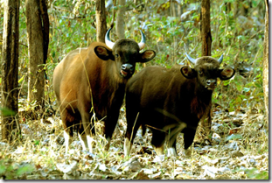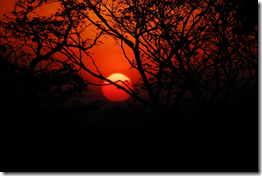Tags
Blogging, Current Events, family, Friends, Humour, Laughter, Life, News, personal, Philosophy, Philosophy of Life, Politics, Random, Relationships, thoughts, Writing
 I have been selected to go to Melghat Tiger Reserve which is located on southern offshoot of the Satpura Hill Range in Central India, called Gavilgarh hill in the Indian state of Maharashtra for this entire week for my organization. I am going there as a part of Melghat Bio Diversity Impact Study where we will be volunteering to help the villagers to reduce their dependency on sharing the natural resources with the Tiger.
I have been selected to go to Melghat Tiger Reserve which is located on southern offshoot of the Satpura Hill Range in Central India, called Gavilgarh hill in the Indian state of Maharashtra for this entire week for my organization. I am going there as a part of Melghat Bio Diversity Impact Study where we will be volunteering to help the villagers to reduce their dependency on sharing the natural resources with the Tiger.
Melghat area was declared a Tiger Reserve in 1974. The northeastern boundary of the Reserve is marked by the Tapti river. Melghat is the prime bio-diversity repository of the state.
Protection and habitat management are the main inputs here. Issues related to high degree of man-animal conflict are tackled on a priority basis. The Reserve area has been divided into three zones for management purposes and to strike a balance between bio-diversity conservation and ecologically sustainable community development.

During monsoon, special protection squads carry out foot patrolling to curb the hunting of sambar and wild boar by the local people. Similar squads are established during the summer for fire protection works. Injuries and killing of human beings by tiger, leopard and sloth bears is another conflict.
Some of the species that are usually spotted there are the Tigers, leopards, sloth bear, wild dog, jackal, sambar, gaur, barking deer, nilgai, chital, chausingha, ratel, flying squirrel, wild boar, langur, Rhesus monkey, porcupine, pangolin, mouse deer, python, otter, caracal, blacknaped hare. More than 700 naturalised plant species have been enlisted in the Flora of Melghat. These species belong to about 400 genera representing as many as 97 families.
 The activities that we are to undertake are to study bio diversity signs such as wild herbivore sightings, pellets and spoor; signs of tiger and other carnivores; tree and grasses and bird life. It seems that there are some 365 types of species aka reptiles that live and breed in those jungles.
The activities that we are to undertake are to study bio diversity signs such as wild herbivore sightings, pellets and spoor; signs of tiger and other carnivores; tree and grasses and bird life. It seems that there are some 365 types of species aka reptiles that live and breed in those jungles.
This is going to be so much fun, as this is going to be my first wild life adventure. They have advised us to carry lot of warm clothes as the temperature drops down to 8 degrees and we will be living in tents. Now, for me this surely is an experience of a life time. Never done it and doing any thing first time has its own sets of anxiousness and a level of excitement as well. I am looking forward for that eerie silence of the night, the alertness of walking through the jungles, the rush to spot a wild animal ooooo just can’t wait.
Adios till next week.

That seems so awesome. I’ve always wanted to live in a rainforest for a bit, although I’m scared shitless of spiders. Do live in India?
Deeps: Hi Mike. Welcome to my blog.
LOL people have scared me that there will be snakes and the likes and to be careful and not get eaten up. Some of my friends have left no stone unturned to call up my insurance agent to ensure I am covered…. Ya I live in India. Have you visited here before? See you around.
Wow!! 😀
Sounds so coool…!!! Wish I could join you! Have loads of fun! 😀
Deeps: Thanks Nikhil ….You can still come along…:) and be my body guard LOL. Thanks I sure will have a blast 🙂
Whoa! Lucky you! I hope to come back here and read about your adventures. Have a wild time 🙂
Deeps: Hi Shivya, Welcome to my blog. Thank You and ya, I am sure lucky as I haven’t done any of this before. I sure will update the blog with all the details of my Jaunting Adventure! 🙂
that sounds wonderful and scary too!
Deeps: Hahah LOL Reema. Some people that I know, told me that they would never attempt this…!! 🙂
WOOHOO!!!!!!!!!!!!!!!! I cannot wait to hear the tales of your adventure…… have a total blast, and learn lots of new things!!!
Deeps: Thank You Thank You soooo much Van…! I cannot contain the excitement as well 🙂
wow that sound great.I have heard from my friends that Melghat Tiger Reserve is a awesome place.Would surely like to read some adventure stories of yours. Enjoy and have a great time.
http://SaveFewBucks.Blogspot.com
Deeps: Welcome to my blog Jazz… It sure was an experience of sorts…just one of a kind! Keep visiting!
wow! Cooool…..Enjoy Gurl, and get some pictures of tigers for us, a close-up view 😉
Deeps: Thanks Neilina…I have got some good pictures…going to be updating the same on my blog soon!!! 🙂 Cheers!!!
This will be one fun trip. Click a lot of photos!
Deeps:It sure was a great experience…Updating the blog with some more photos soon!!!
Wow, cool! Enjoy, and if you see a tiger give him a big kiss on the nose from me.
Deeps: I sure tried to find him to do that for you…but Alass…he didn’t want any from you, so he didn’t even come near me…. 😛 😛
Wow, what a wonderful opportunity! Have fun, stay warm and safe.
Deeps: Thank You so much!! I definitely did try to stay in warm….it was a tough task though at 7 degrees 🙂 But am surely back safe and sound 🙂
Im with Dude, give a kitty a big kiss from me, we luff tigers… how awesome is this! Have fun huns!
Deeps: Thank you…Thank Youuuu sooo muchh Big M…I missed yaaa!!! 🙂
Came in from Reema’s blog. I’ve been reading a few of your previous posts and really liked it a lot. You take care in that jungle of yours and always be in “running shoes” 🙂 Just joking…
Keep blogging! Adding you to my blogroll…
Deeps: Welcome to my Blog Biju and Thanks a Ton for thinking of me so highly to be adding me to your blog roll. I sure was not only in my running shoes, but was also armed with a mere bamboo stick….hoping in the hopes that it will be the only thing that may just come to my rescue..!! LOL. Keep visiting. See you around soon!